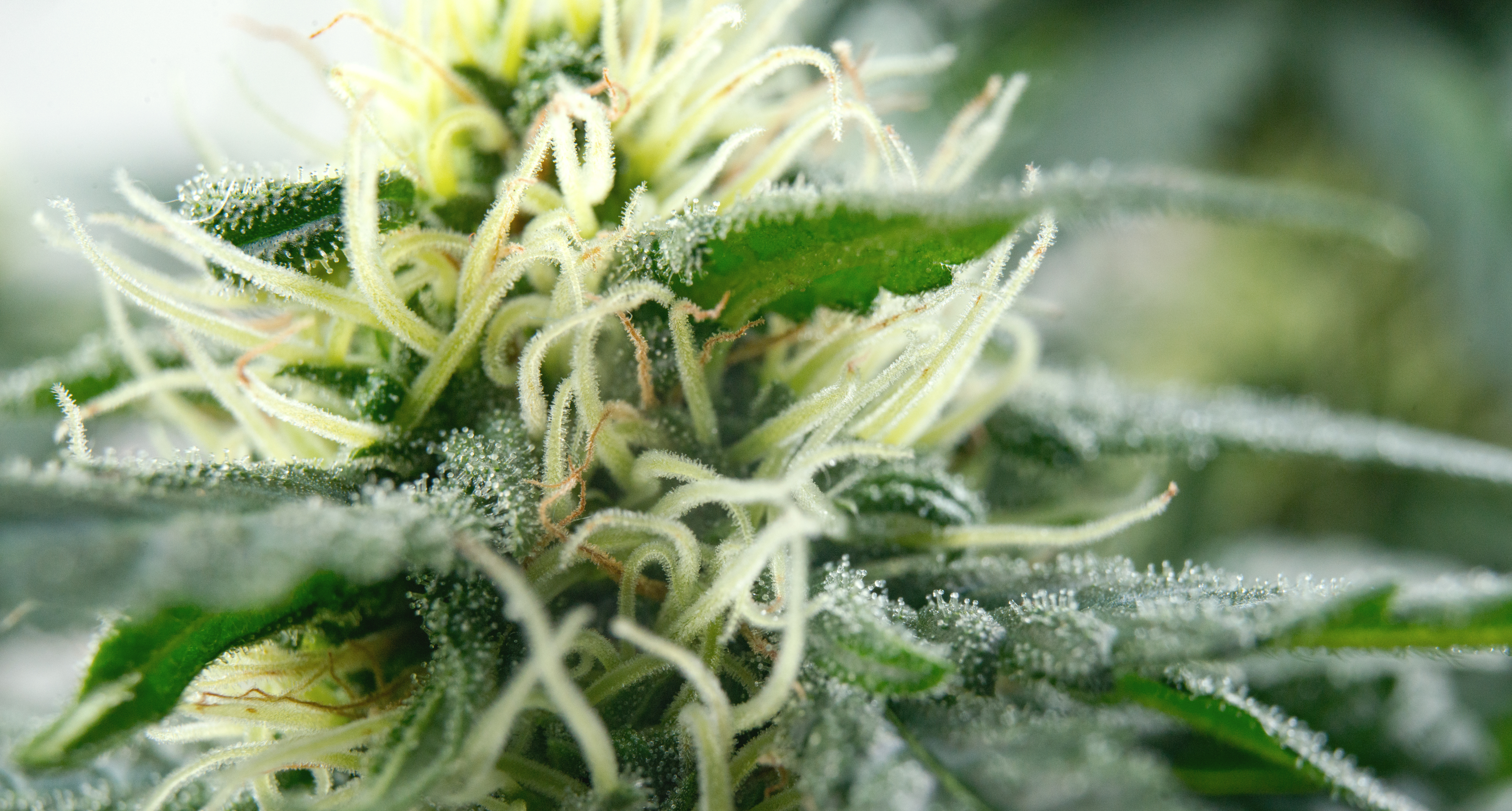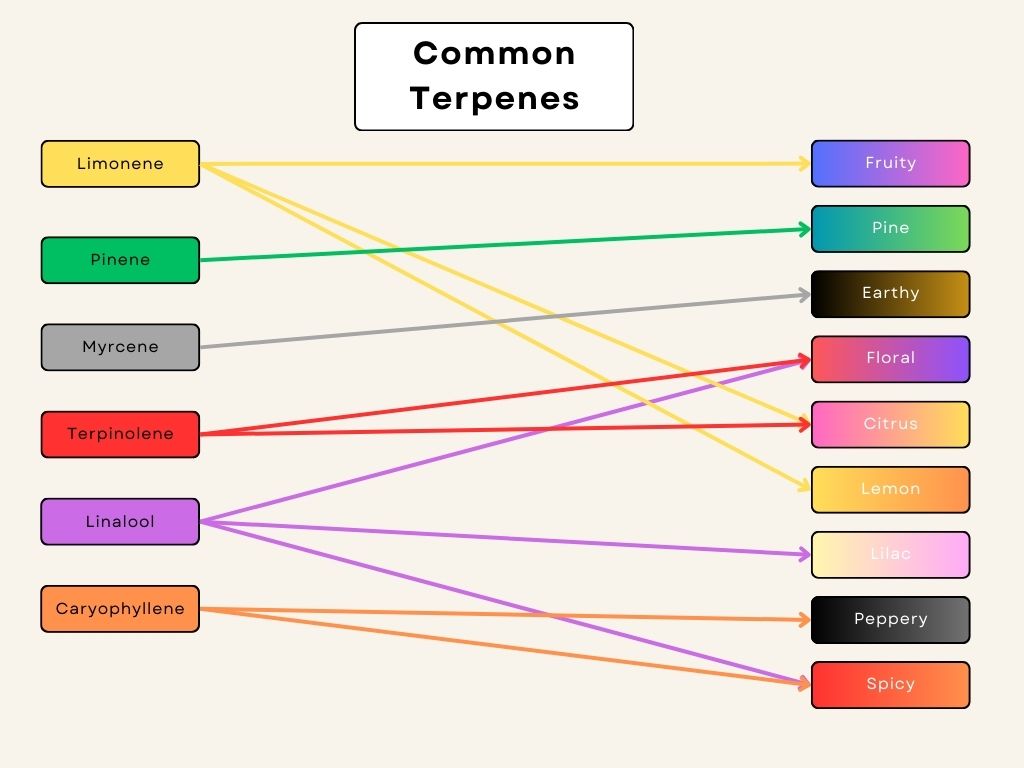
- February 15, 2024
- 1 comment
- 758 Views
The choice of strain, or cultivar,[1] primarily depends on customer preferences. Factors to consider include intended use and desired effects, as well as preferred fragrance, color and flavor. For commercial growers, yield potential is another important consideration.
These factors also align with the grower’s commercial needs. After all, quality determines price per weight and yield determines quantity, or sales volume.
Selecting for quality
By quality, we mean fragrance, flavor, color and potency—all of which are significantly determined by genetics.
Let’s talk about potency first, as it is the most important aspect of quality for consumers.
Potency
Cannabidiol (CBD) and Δ9-tetrahydrocannabinol (THC) are the two primary cannabinoids among hundreds of others: THC is the preeminent psychoactive compound, but it also has analgesic and anti-inflammatory properties; CBD and similar cannabinoids are non-psychoactive with anxiolytic, antiemetic, antipsychotic and neuroprotective antioxidant properties.
The different therapeutic and psychoactive qualities are determined by a strain’s cannabinoid profiles—the proportion of THC and CBD in the plant tissue (i.e., the strain’s THC/CBD ratio):
- Recreational use: For recreational consumers, choose a strain that is high in THC. Leisure users enjoy psychoactive effects, so the CBD content is unimportant to them
- Medicinal use: For medicinal consumers, choose a strain that matches their therapeutic needs. In general, while THC does have therapeutic qualities, medicinal users typically require high levels of CBD relative to THC—or at least a balanced THC/CBD ratio.[2]
Scientists have classified cannabis into five chemotypes based on THC/CBD ratio:
- Chemotype I: high THC concentration (THC/CBD ratio > 1)
- Chemotype II: balanced THC and CBD concentrations (THC/CBD ratio = 1)
- Chemotype III: high CBD concentrations (THC/CBD ratio < 1)
- Chemotype IV: dominance of cannabigerolic acid (CBGA)
- Chemotype V: minimal cannabinoid content (e.g., industrial hemp))
Additionally, a simplified classification modifies the above-mentioned classification, dividing cannabis into three groups based on their THC and CBD percentages: [3]
- Type II: High-CBD
- Type III: Balanced THC and CBD
Finally, a less scientific, shorthand way to gauge potency is by subspecies: [4]
- Indica strains are known for calming effects.
- Sativa Strains are associated with euphoric highs.
- Hybrid Strains offer a balance between relaxation and euphoria.
All that said, the best way to determine the potential potency of a strain is to have its cannabinoid profile lab tested. If you are a large-scale commercial grower, we recommend you invest in independently confirming the THC/CBD ratio of your selected strain.
Below are the top 100 cannabis strains voted by Leafly editors and some of the top cannabis growers in the community.
Top 100 Cannabis Strains
Euphoria
- Original Glue
- Wedding Cake
- GSC
- Northern Lights
- Chemdog
- Trainwreck
- GMO Cookies
- Mendo Breath
- Forbidden Fruit
- Gushers
- Alien OG
- Rainbow Belts
- Motorbreath
Uplifting
- Dutch Treat
- MAC
- Mimosa
- Strawberry Cough
- Cheese
- Blueberry Muffins
- Stardawg
- Kush Mints
- Orange Creamsicle
- Key Lime Pie
- Lemon Tree
- Grape Pie
- Mango
Relaxing
- OH Kush
- Do-Si-Dos
- Afghani
- Ice Cream Cake
- Slurricane
- Apple Fritter
- Khalifa Kush
- Animal Cookies
- Peanut Butter Breath
- LA Kush Cake
- Master Kush
- Mazar x Blueberry OG
- Grape Ape
- Zkittlez
Sleepiness
- Granddaddy Purple
- Purple Punch
- Papaya Punch
- Bubba Kush
- Purple Kush
- White Rhino
- Blackberry Kush
- LA Confidential
- Hindu Kush
- 9 Pound Hammer
- MK Ultra
- Purple Urkle
- Pink Kush
- Blueberry
Energizing
- Sour Diesel
- Durban Poison
- Pineapple Express
- Maui Wowie
- Acapulco Gold
- Green Crack
- Super Silver Haze
- White Fire OG
- Tropicana Cookies
- Lamb’s Bread
- Island Sweet Skunk
- Super Lemon Haze
Creativity
- Gelato
- Blue Dream
- Jack Herer
- Bruce Banner
- Biscotti
- Tangie
- Headband
- Haze
- Skunk 1
- Chocolope
- Vanilla Frosting
- Strawberry Banana
Social
- Runtz
- White Widow
- Cherry Pie
- AK-47
- FPOG
- Candyland
- ACDC
- Lava Cake
- Banana Kush
- Triangle Kush
- Gelonade
- Watermelon Zkittlez
Focusing
- SFV OG
- Zookies
- Bubble Gum
- Papaya
- Guava
- Lemonade
- Harlequin
- Black Jack
- Pennywise
- Ghost Train Haze
Fragrance, flavor and color
Cannabis, not unlike wine, has a plethora of cultivars, each with its own characteristics important for consumers depending on their preferences:
- Fragrance and flavor are imparted by aromatic compounds called terpenes. What’s more, they too can have distinct therapeutic and recreational benefits. Variations in terpene genes are associated with the aroma-specific differences among strains:[6]
- Monoterpene (myrcene) correlates strongly with an earthy fragrance and a euphoric high.
- Sesquiterpenes correlates with a sweet or herbal aroma.
- Color is a different animal, imparted by a different category of chemicals called anthocyanins, released by secondary metabolites called flavonoids. Don’t be misled by the name: The word “flavonoid” derives from the Latin word flavus, meaning “color.”

Selecting for quantity
By quantity, we mean yield—the dry weight of fruits and
flowers and the overall biomass.
Yields too are also significantly influenced by genetics.
Therefore, strain selection is crucial to maximizing yield.
For the past half century, growers have selectively bred
cannabis to produce dense, abundant buds, rich in resin, making a huge
difference to weight. These varieties sometimes have shorter flowering periods
as well, allowing for more harvests per crop life cycle—and more crop life
cycles per year, further increasing sales volumes.
A word of caution: Never sacrifice quality in the pursuit of
quantity. Although yields are important, remember that higher quality cannabis
demands a higher price point.
Select a strain that will not only yield fat buds but also
fat margins.
Conclusion
The choice of strain, encoded in genetics, is fundamental,
largely determining factors ranging from quality to yield potential and whether
your product is suitable for recreational or medicinal consumers.
However, for any given strain, the cultivation inputs (e.g., lighting, fertilizer, etc.) and your growing techniques are the means of maximizing your strain’s genetic potential.
[1] “Strain” is a less formal or scientific term used in the cannabis industry to describe the genetic variations or phenotypes of cannabis selectively bred for distinctive characteristics. “Cultivar,” short for “cultivated variety,” is the botanical equivalent of “strain,” and it is technically the correct term when referring to a specific breed of cannabis.
[2] Medicinal users are being treated for chronic, occasionally life-threatening ailments. They do not need added stress, and they need to go about their daily lives—working, driving and so on—unintoxicated.
[3] https://doi.org/10.1016/j.phytochem.2022.113215
[4] https://doi.org/10.1186/s42238-019-0001-1
[5] https://www.leafly.com/news/strains-products/top-100-marijuana-strains
[6] https://doi.org/10.3390/plants11091236
[7] https://doi.org/10.1371/journal.pone.0192247.g004
The Emerald Harvest Team
fanny
Nothing boring about cannabis education… you’re the pros!